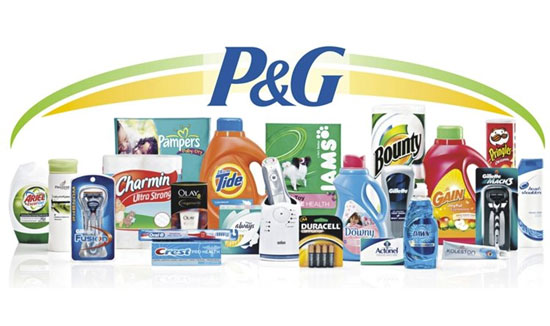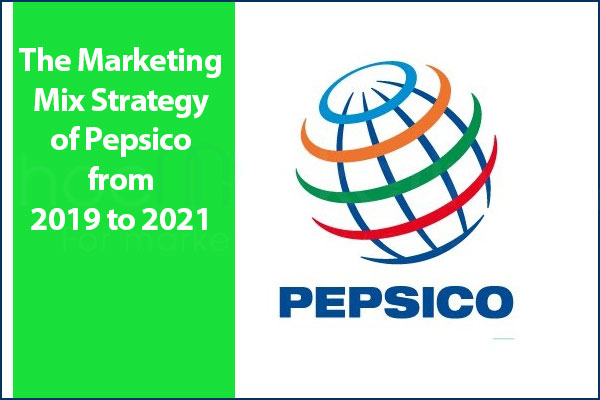
The Marketing Mix Strategy of P&G from 2019 to 2021

Welcome to this blog post where we will be discussing the Marketing Mix Strategy of Procter & Gamble (P&G) from 2019 to 2021. P&G is a multinational consumer goods corporation that offers a wide range of products such as household, personal care, and beauty products.
Welcome to this blog post where we will be discussing the Marketing Mix Strategy of Procter & Gamble (P&G) from 2019 to 2021. P&G is a multinational consumer goods corporation that offers a wide range of products such as household, personal care, and beauty products. In this post, we will be taking a closer look at the key highlights of P&G's Marketing Mix Strategy, which includes product, price, place, and promotion. By the end of this post, you will have a better understanding of how P&G has managed to maintain its position as a leading player in the consumer goods industry. Let's dive in!
A brief of P&G
Procter & Gamble, commonly known as P&G, is a multinational consumer goods corporation headquartered in Cincinnati, Ohio. The company was founded in 1837 by William Procter and James Gamble, and it has since grown into one of the largest and most successful consumer goods companies in the world.
P&G's product portfolio includes a wide range of household and personal care products, including brands such as Tide, Pampers, Gillette, Crest, and Olay. The company operates in over 180 countries and employs more than 95,000 people worldwide.
Over the years, P&G has built a reputation for innovation and marketing excellence. The company is known for its cutting-edge research and development, as well as its savvy marketing campaigns that resonate with consumers around the world. P&G's marketing mix strategy has played a key role in its success, and it continues to evolve and adapt to changing market conditions and consumer preferences.
Typical highlights in P&G's Marketing Mix Strategy 2019 - 2021
Procter & Gamble (P&G) is a multinational consumer goods corporation that operates in over 180 countries worldwide. The company has a vast portfolio of brands, including Tide, Pampers, Gillette, and Crest, among others. P&G's Marketing Mix Strategy has been a crucial aspect of the company's success in maintaining its market position and driving growth. Here are some typical highlights of P&G's Marketing Mix Strategy from 2019 to 2021:
1. Customer-Centric Approach
P&G has always been a customer-centric company, and its recent Marketing Mix Strategy has reinforced this approach. The company has been focusing on understanding its customers' needs and preferences to develop products that meet their expectations. P&G's market research has been extensive, using various methods to gather insights into consumer behavior, including surveys, focus groups, and social media analytics.
2. Product Innovation
Product innovation has always been a significant driver of growth for P&G. The company invests heavily in research and development to create innovative products that address consumer needs. In recent years, P&G has been focusing on sustainability and launching eco-friendly products that appeal to environmentally conscious consumers. For instance, Tide launched a plant-based laundry detergent in 2019, while Pampers released a line of diapers made from recycled materials in 2020.
3. Competitive Pricing
Pricing is a critical aspect of P&G's Marketing Mix Strategy. The company has been implementing competitive pricing strategies to maintain its market position and attract price-sensitive consumers. P&G's pricing strategy is based on the value proposition of its products, ensuring that they provide excellent value for money. The company also offers promotions and discounts to drive sales and customer loyalty.
4. Efficient Distribution Channels
P&G has a well-established distribution network that ensures its products reach consumers in a timely and efficient manner. The company has been leveraging technology to optimize its distribution channels, using data analytics and automation to improve supply chain efficiency. P&G has also been partnering with online retailers to expand its reach and offer customers convenient shopping options.
5. Integrated Marketing Communications
P&G's Marketing Mix Strategy is characterized by an integrated marketing communications approach. The company uses a mix of traditional and digital marketing channels to reach its target audience effectively. P&G's advertising campaigns are highly creative, engaging, and emotionally resonant, building strong brand connections with consumers. The company also uses social media and influencer marketing to amplify its message and connect with younger, tech-savvy consumers.
In conclusion, P&G's Marketing Mix Strategy from 2019 to 2021 has been guided by a customer-centric approach that emphasizes product innovation, competitive pricing, efficient distribution channels, and integrated marketing communications. These typical highlights have enabled P&G to maintain its market position and drive growth in a highly competitive industry.
Product in P&G's Marketing Mix Strategy 2019 - 2021
P&G has always been a company that emphasizes quality when it comes to its products. In 2019, the company introduced a new line of products called "Pure" that was designed to cater to the growing demand for natural and eco-friendly products. The Pure line includes products such as Tide laundry detergent, Downy fabric softener, and Head & Shoulders shampoo.
In addition to the Pure line, P&G has also been focusing on product innovation. The company has been investing heavily in research and development in order to come up with new and improved products. For example, in 2020, P&G introduced a new line of oral care products called "Crest Whitening Emulsions". These products are designed to whiten teeth without causing sensitivity or discomfort.
Another area where P&G has been focusing on in terms of product is customization. The company has been using data analytics and artificial intelligence to better understand its customers and their needs. This has allowed P&G to create personalized products that cater to specific customer segments. For example, the company's SK-II brand offers personalized skincare routines based on individual skin concerns and needs.
Overall, P&G's product strategy from 2019 to 2021 has been focused on quality, innovation, and customization. The company has been introducing new products, investing in research and development, and using data analytics to create personalized products that cater to specific customer segments. This approach has enabled P&G to stay ahead of the competition and meet the changing needs of its customers.
Price in P&G's Marketing Mix Strategy 2019 - 2021
Pricing is an essential element of the marketing mix and is crucial to the success of any product or service. P&G has been using various pricing strategies to stay competitive in the market and maintain its position as a leading consumer goods company.
One of the pricing strategies that P&G has been using is value-based pricing. This strategy involves setting prices based on the perceived value that the product or service provides to the customer. P&G has been able to provide high-quality products at a reasonable price, which has helped them to gain customer loyalty and increase their market share.
P&G has also used a skimming pricing strategy for some of its premium products. This strategy involves setting high prices initially and then gradually lowering them as competition increases. This strategy has been successful for P&G because it has allowed them to generate high profits while maintaining their premium image.
Another pricing strategy that P&G has used is penetration pricing. This strategy involves setting low prices to penetrate the market and gain market share quickly. P&G has used this strategy for some of its new products to attract customers who are price-sensitive.
Furthermore, P&G has used promotional pricing to boost sales of its products during specific periods. This strategy involves offering discounts, coupons, and other promotional offers to customers to encourage them to purchase the product. P&G has been successful in using this strategy, especially during festive seasons.
In conclusion, P&G has been using a combination of pricing strategies to maintain its position as a market leader in the consumer goods industry. By using value-based pricing, skimming pricing, penetration pricing, and promotional pricing, P&G has been able to cater to the needs of different customers and gain a competitive advantage in the market.
Place in P&G's Marketing Mix Strategy 2019 - 2021
When it comes to Place in the Marketing Mix Strategy, P&G has always been at the forefront of innovation. With the rise of e-commerce, P&G has been actively working on improving their digital presence and expanding their reach to consumers through online channels.
P&G has been focusing on strengthening their partnerships with online retailers such as Amazon, Walmart, and Target, to ensure their products are easily accessible to consumers. Additionally, P&G has also been implementing direct-to-consumer strategies by launching their own e-commerce platforms for specific brands like Tide and Gillette.
In addition to the digital space, P&G has also been expanding their presence in emerging markets such as Africa, India, and China. P&G has been investing heavily in building their distribution channels in these markets, enabling them to reach a wider audience and increase their market share.
P&G's investment in innovation and technology has also enabled them to improve their supply chain management, resulting in faster product delivery and increased efficiency.
Overall, P&G's focus on expanding their digital presence, strengthening their partnerships with online retailers, and investing in emerging markets has been a key factor in their success in the Place element of their Marketing Mix Strategy from 2019 to 2021.
Promotion in P&G's Marketing Mix Strategy 2019 - 2021
Promotion is a critical element of P&G's marketing mix strategy. The company invests heavily in advertising, sales promotions, and public relations to create awareness, interest, and demand for its products. Here are some of the key highlights of P&G's promotion strategy from 2019 to 2021:
1. Digital Advertising
P&G has been heavily investing in digital advertising to reach its target audience. The company has been using a mix of social media advertising, programmatic advertising, and search engine marketing to reach its target audience. In 2020, the company spent over $7 billion on advertising, with a significant portion of it allocated to digital advertising.
2. Influencer Marketing
P&G has been leveraging the power of influencer marketing to promote its products. The company has been partnering with influencers across different social media platforms to create engaging content and promote its products. In 2020, P&G partnered with over 1,500 influencers to promote its products.
3. Sales Promotions
P&G has been using sales promotions to drive sales and increase brand loyalty. The company has been offering discounts, coupons, and other incentives to encourage customers to try its products. In 2020, P&G launched a loyalty program called "P&G Good Everyday" that rewards customers for purchasing its products.
4. Public Relations
P&G has been using public relations to build and maintain its brand reputation. The company has been actively engaging with media outlets and influencers to promote its products and address any issues or concerns. In 2020, P&G launched a campaign called "Lead with Love" to showcase its commitment to social responsibility and sustainability.
Overall, P&G's promotion strategy has been effective in creating awareness, interest, and demand for its products. The company's focus on digital advertising, influencer marketing, sales promotions, and public relations has helped it reach its target audience and build a strong brand reputation.
Summary
In conclusion, P&G has been implementing an effective marketing mix strategy from 2019 to 2021. With a focus on product innovation, pricing strategy, distribution channels, and promotional activities, P&G has been successful in maintaining its position as a leading consumer goods company. By continually adapting to the changing market trends and consumer needs, P&G has been able to stay relevant in the highly competitive industry. P&G's marketing mix strategy serves as an excellent example for other companies to follow in their quest for success.














